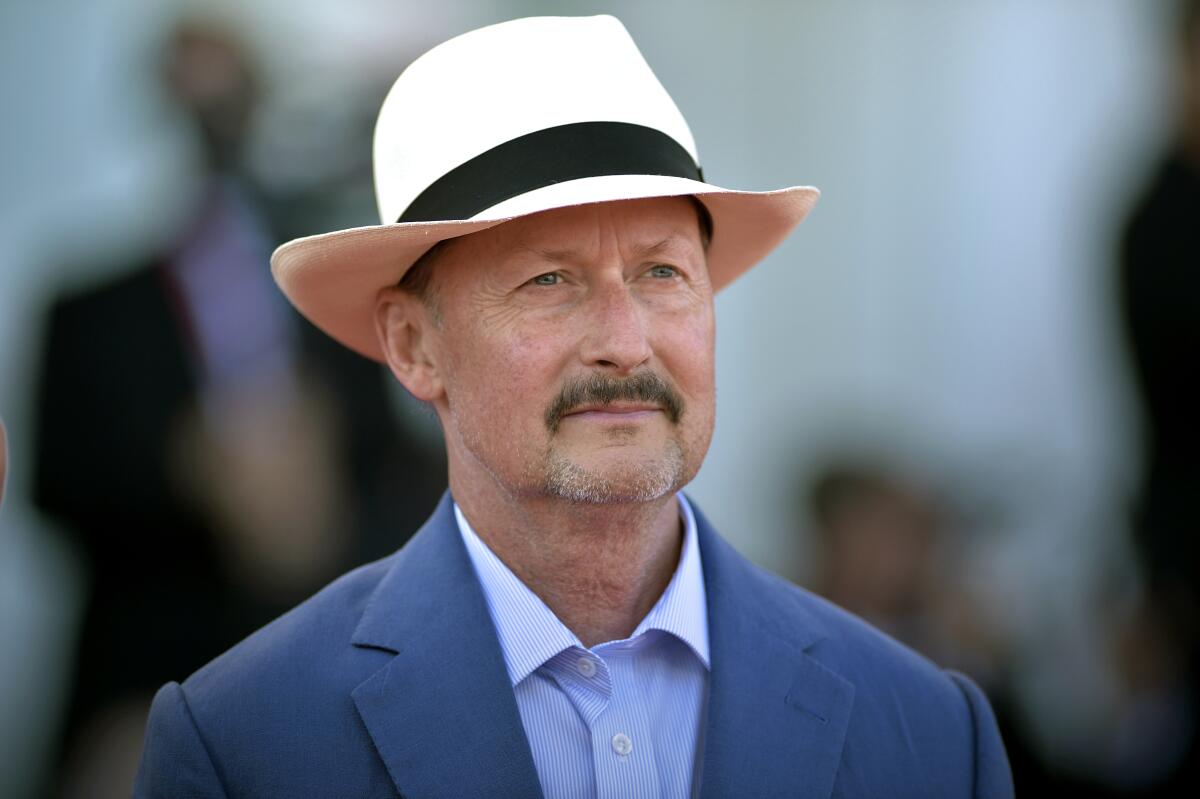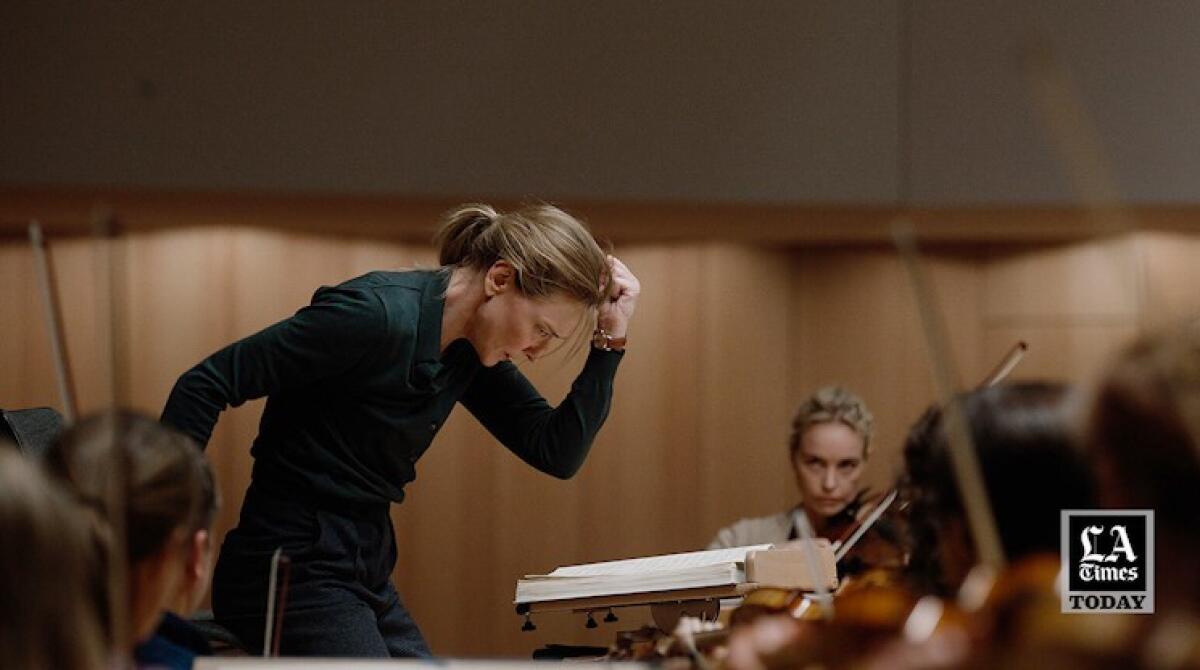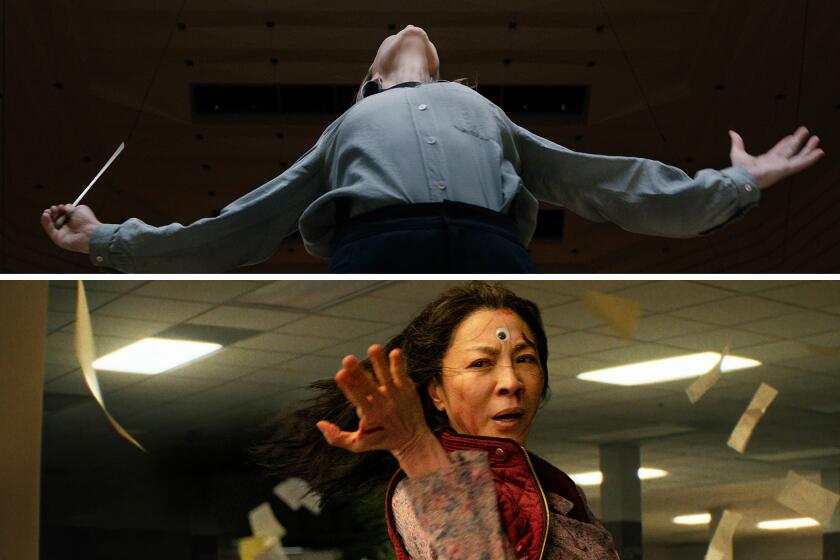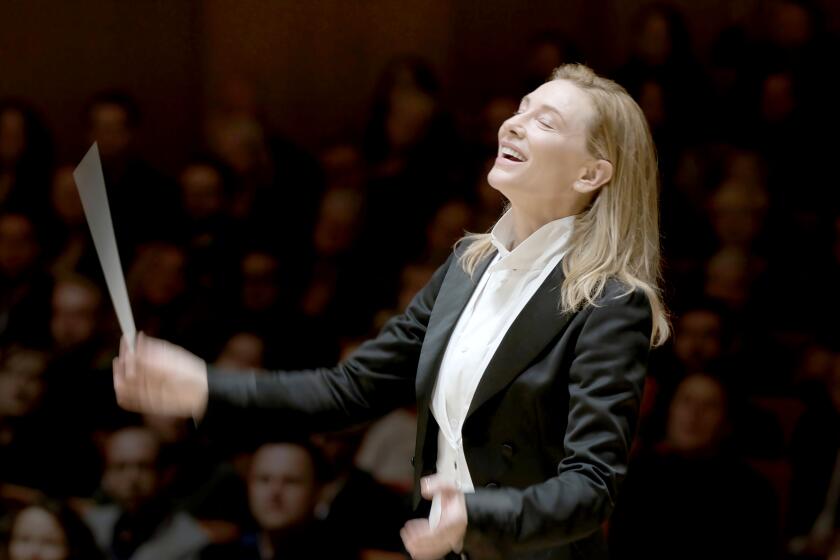How Lydia Tár was waiting in a drawer to be brought to life

- Share via
In March 2020, right when the world shut down due to the COVID-19 pandemic, Scott Lambert, Peter Kujawski and Kiska Higgs asked if I might be interested in writing a film for them centered on a conductor. That was it. I could write whatever I liked. There was no pitch, no outline, just their enthusiasm for making a film together. On paper, this might sound like a golden opportunity. But I’ll admit I was somewhat leery of it. Being given that kind of freedom and respect means you desperately want to be worthy of it. I reached into a drawer and pulled out an old notebook. There she was, Lydia Tár, apparently waiting for just such a moment.
For the longest time, I’d been thinking about a character who took a childhood pledge of self-education to pursue a dream, and once she’s achieved it, the dream morphs into a nightmare. Someone who once lived a life dedicated to art, but now finds herself running an institution that lays bare her own weaknesses and proclivities, proselytizing her rules to others only to violate them herself with seemingly a total lack of self-awareness. But as Janet Malcolm would say, ‘Being aware of your rascality doesn’t excuse it.’”
Who’s going to win the Oscar for lead actress is one of the questions heading into a ceremony that, God help us, is still five weeks away.
I didn’t know a great deal about concert music. Like a lot of people, my introduction to it was through Leonard Bernstein. When you look at the Harvard lectures he gave in the 1970s, he removed all possible pretense and replaced it with love. Bernstein made it clear that classical music is noise: You can play this phrase and make it sound like “Dragnet,” or change the touch and attack and make it sound like Charles Ives — it’s all the same. If you’re listening to a film score today or, for that matter, Bugs Bunny, you’re hearing music born from canonical work.

I knew “Tár” would be a rehearsal film, a process film, and wanted to try to convey the on- and offstage mechanics of such a thing. One concern about placing a character into this milieu was that people who actually live their lives within it might shrug the film off and say we’d gotten it wrong, that we’d presented a toy town version of the discipline.
So it was essential that the job of conducting have real agency in the narrative and not simply be there as a backstory for something else. Reading “For the Love of Music” by John Mauceri set me on a path. I called John and peppered him with questions based on the book. He stopped me and said, “Read my other books first, then let’s talk.” I did and found myself under the spell of a true master.
Cate Blanchett, director Todd Field and composer Hildur Guðnadóttir break down the vital role classical music plays in the critically hailed ‘Tár.’
He laid out a course of study for me, and the two of us spent hours on the phone together. John was incredibly generous with his knowledge and time. His enthusiasm, very much like his longtime mentor Bernstein, is absolutely contagious. For years, John conducted movie nights at the Hollywood Bowl, drawing sell-out crowds and helping to legitimize film scores in the minds of classical music audiences. John has an unusual background for a conductor, in that he really understands the mechanics of movies. So we had a shorthand, and as a practical matter, I could run plot ideas by him to test their plausibility.
Mahler’s Fifth Symphony is a milestone, not just in classical music but in other forms as well. It’s easy to fall in love with the fourth movement. For years, I’d been obsessed with the subtle nuances of various recordings based on the orchestra, hall and conductor. That is, until I realized how many people’s introduction to the piece was watching Luchino Visconti’s “Death in Venice.” So when John asked me what my favorite piece of classical music was, I covered my eyes and became an apologist for the Adagietto [within the Fifth]. He scolded me, “No one truly serious about classical music is ever cynical about the Adagietto. Forget Visconti. Build your thing around the Five.”
So I did.
The story would center on a chief conductor, the first female in the history of any major German orchestra, and be framed over a three-week period that involves her preparing for a book launch in New York City, in addition to a performance in Berlin for a Deutsche Grammophon live recording of Mahler’s Fifth Symphony.
After this, the script came quickly. Twelve weeks later, I handed it into the studio with one caveat; should they hate it, I would write something else. They didn’t. And had but one note:
“Go make it.”
More to Read
From the Oscars to the Emmys.
Get the Envelope newsletter for exclusive awards season coverage, behind-the-scenes stories from the Envelope podcast and columnist Glenn Whipp’s must-read analysis.
You may occasionally receive promotional content from the Los Angeles Times.









